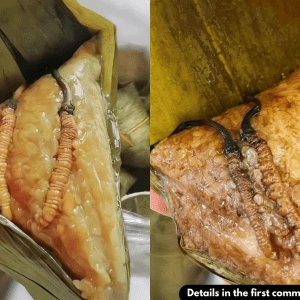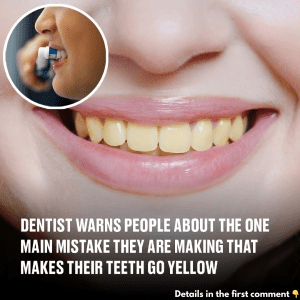As a parent, noticing unusual hair loss in your child can be alarming, especially when it follows a specific pattern around the back of the neck. This circular or “ring-like” hair loss, common in children aged 3-6 months, often signals underlying health concerns. Beyond hair loss, symptoms like excessive sweating, difficulty sleeping, and even changes in head shape could point to possible deficiencies or developmental issues. Here’s everything you need to know to understand, address, and prevent this condition.
Recognizing the Signs of Ring-Like Hair Loss in Babies

When a baby’s hair falls out in an arc at the back of their head, it’s usually easy to spot. The hair loss often appears in clumps, and you might notice bald patches forming around the nape. This ring-like pattern is more than a cosmetic issue—it’s often associated with other symptoms, including:
- Frequent crying and irritability
- Excessive sweating, especially at night
- Difficulty staying asleep, often waking up startled
- A wide, slow-to-close fontanelle (soft spot) on the top of the head
- A soft or flattened skull shape
- Constipation
These signs, combined with the hair loss, suggest that your child could be experiencing a nutrient deficiency or other health concerns that require attention.
Potential Causes of Ring-Like Hair Loss in Babies
Identifying the root cause of your child’s hair loss is crucial for effective treatment. While hair loss in infants is sometimes harmless, it’s essential to understand the possible underlying issues to determine if medical intervention is needed.
1. Hormonal Imbalance After Birth
Newborns sometimes experience hair loss due to fluctuating hormone levels inherited from their mother. If the mother experienced hormonal shifts or postpartum hair loss, it’s possible that the baby’s body is similarly adjusting. This hormone-related hair loss often resolves itself but can sometimes indicate an underlying hormonal disorder that may need a closer look.
2. Rickets and Malnutrition
Rickets and nutritional deficiencies are among the leading causes of ring-like hair loss in infants. Babies who don’t get enough sunlight or have poor appetites may suffer from a vitamin D or calcium deficiency, both of which are essential for healthy growth and bone development. Hair loss in this pattern is often one of the early signs of rickets or malnutrition, conditions that can have lasting impacts on a child’s development if not addressed.
Parents noticing these symptoms should consider dietary changes for themselves (if breastfeeding) and for their babies, and consult with a pediatrician about possible supplements or nutritional interventions.
3. The Impact of Sleeping Position
Infants who are consistently placed in the same sleeping position, particularly on their backs, may develop bald patches. When the scalp rests directly against a surface for prolonged periods, the hair follicles in that area may be under stress. This can result in hair loss and prevent regrowth, particularly around the nape of the neck where babies’ heads most often rest. Frequent head movement and position changes can help prevent this issue.
What Parents Can Do to Manage and Prevent Ring-Like Hair Loss
Once you understand the causes, you can take steps to support healthy hair regrowth for your child. While some causes of hair loss are more serious than others, there are ways to manage and potentially reverse this condition.
1. Nutritional Support for Both Mother and Baby

A well-rounded diet is crucial for preventing nutrient deficiencies that contribute to hair loss. For breastfeeding mothers, consuming a balanced diet rich in protein, vitamins, and minerals can improve the quality of milk and, in turn, support their baby’s health. Essential nutrients like vitamin D and calcium play a pivotal role in preventing rickets and supporting bone and hair growth.
If you’re concerned about your baby’s diet, speak to a pediatrician about safe vitamin D supplementation and foods that can improve your child’s nutrient intake. Additionally, regular sun exposure can help your baby synthesize vitamin D naturally, reducing the risk of deficiency-related hair loss.
2. Adjusting Your Baby’s Sleeping Position
Changing your child’s sleeping position can make a significant difference in hair health. Instead of allowing them to lie in the same position all night, alternate their sleeping positions. You might try gently adjusting your baby’s head to face a different direction every few hours, or laying them down on their sides (with appropriate safety precautions). Regularly changing pillows and maintaining a clean, breathable sleep environment can also help reduce sweat buildup that might contribute to hair loss.
3. Seek Medical Advice When Necessary
If the hair loss persists or if other concerning symptoms develop, consulting a healthcare professional is essential. A doctor can assess whether a nutritional deficiency, hormonal imbalance, or skin condition is behind the hair loss and guide you toward the most effective treatment plan. Particularly if you notice symptoms like red, flaky skin or small bald spots, it’s best to get a medical opinion to rule out skin conditions that may require treatment.
Avoid Over-the-Counter Treatments
It’s essential to avoid giving your child medication without a doctor’s prescription, as over-the-counter treatments aren’t always safe for infants and young children. The younger the child, the more susceptible they are to medication side effects. If medication is necessary, your healthcare provider will recommend a safe option and dosage.

Creating a Supportive Environment for Hair Regrowth
Healthy hair growth requires a balanced environment that nourishes the scalp and hair follicles. Keeping your child’s environment clean and well-ventilated can go a long way toward supporting hair health and preventing unnecessary hair loss.
1. Promote Regular Sun Exposure
Exposing your baby to sunlight for 10-15 minutes a day helps with vitamin D synthesis. This can prevent rickets and reduce hair loss due to vitamin D deficiency. Always ensure this sun exposure happens during early morning or late afternoon hours when the sun’s rays are gentler.
2. Use Soft, Breathable Fabrics
Opt for gentle, natural fabrics in your baby’s sleepwear and bedding. Breathable fabrics like cotton help reduce sweating, preventing the scalp from becoming overly moist and promoting healthier hair growth. Regularly washing and sanitizing bedding and clothing also keeps the area around your baby free of irritants that might exacerbate hair loss.
Conclusion: Stay Vigilant and Take Action Early
If you notice hair falling out in a ring-like pattern at the back of your baby’s head, it’s essential to pay attention and consider possible causes. Whether it’s a nutritional deficiency, hormone imbalance, or simply a matter of sleeping position, early detection and proper care can make a world of difference. By providing balanced nutrition, adjusting sleeping habits, and consulting with healthcare professionals when necessary, you can help your child maintain healthy hair growth and overall wellness.


